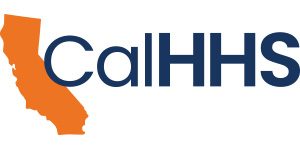The integration of data across government programs is pivotal in addressing the social drivers of health, ensuring that interventions are timely, effective, and equitable. Connected data stands as a powerful catalyst for transformative change. At the forefront of this endeavor is the partnership between the California Health and Human Services Agency (CalHHS) and the California Cradle-to-Career Data System. This collaboration aims to bridge sectors, providing a comprehensive understanding of the conditions in which individuals learn, play, and work.
The Power of Connected Data
The value of connected data in government programs cannot be overstated. When data from various sectors—such as education, healthcare, housing, and employment—are integrated, it paints a holistic picture of the factors influencing health and well-being. This interconnectedness allows for the identification of patterns and trends that may not be visible when data is siloed. It also facilitates the development of targeted interventions that address the root causes of health disparities, rather than just their symptoms.
By leveraging connected data, CalHHS and its partners can move beyond traditional metrics to uncover the underlying social drivers of health. This approach enables a more nuanced understanding of how various factors interplay to impact health outcomes. For instance, analyzing data from schools, healthcare providers, and community organizations can reveal how housing instability affects academic performance and mental health, prompting more comprehensive support strategies.
Bridging Sectors for Holistic Insights
The partnership between CalHHS and the California Cradle-to-Career Data System exemplifies the importance of cross-sector collaboration. Our collective work seeks to connect data from multiple domains to create a seamless information ecosystem. By doing so, it supports a holistic view of the life trajectories of individuals and communities.
This cross-sector data integration helps in better understanding and addressing the conditions in which people live. For example, linking educational data with healthcare records can provide insights into how early childhood education impacts long-term health outcomes. Similarly, connecting employment data with social services records can help identify barriers to economic stability and develop strategies to overcome them.
Contextualizing Data with Qualitative Insights
While data is invaluable, it must be contextualized and paired with qualitative research and a deep understanding of on-the-ground realities. Numbers and statistics provide a broad view, but the stories and experiences of individuals and communities give meaning to the data. By integrating qualitative insights, we can ensure that our interpretations and interventions are grounded in the actual conditions and needs of the communities we serve.
Qualitative research methods, such as interviews, focus groups, and community consultations, provide rich, detailed information that complements quantitative data. This approach helps us understand the why behind the numbers, offering insights into the lived experiences of individuals and the specific challenges they face. For instance, data might show high rates of absenteeism in a particular school, but qualitative research can reveal underlying issues such as housing instability, lack of transportation, or community safety concerns.
From Data to Actionable Insights
One of the critical challenges we face today is being data-rich but information-poor. Collecting vast amounts of data is not enough; it must be transformed into actionable insights that drive real-time improvements in program delivery. The data brought together through the CalHHS and Cradle to Career partnership is not just for archival purposes but is intended to generate insights that can inform policy and practice.
For instance, real-time data analytics can help identify emerging health threats or social issues, enabling swift intervention. It can also highlight successful programs and practices that can be scaled up or replicated in other regions. This proactive use of data ensures that government programs are not only reactive but also anticipatory, addressing issues before they become crises.
Putting Data into Practice
To put this into sharper context and to connect the dots, take the example of Juan who is a community health worker at a community health clinic in Los Angeles. His role involves visiting patients in their homes, conducting health screenings, and helping them navigate both the healthcare and social services systems. The community he serves is diverse, with many individuals facing socioeconomic challenges, chronic health conditions, and limited access to comprehensive care. The community health clinic he works for is exchanging data pursuant to CalHHS Data Exchange Framework and has equipped Juan with population health management tools, giving him access to important information that helps him do his job and allows him to track his patients’ progress over time.
Morning Visit: Mrs. Hernandez
Juan’s day starts with a visit to Mrs. Hernandez, an elderly patient with diabetes and hypertension. Juan accesses Mrs. Hernandez’s latest health data, including her blood sugar levels, medication adherence, and recent hospital visits. He also reviews her social services data, which indicates she recently applied for assistance with food insecurity.
Armed with this comprehensive information, Juan can tailor his visit to address both her health and social needs. He discusses her diet, ensures she has access to nutritious food, and helps her understand how to manage her conditions effectively. He also follows up on her application for food assistance, ensuring she receives the support she needs.
Afternoon Visit: Mr. Nguyen
In the afternoon, Juan visits Mr. Nguyen, a middle-aged man recovering from a stroke. Before the Data Exchange Framework was live, Juan struggled to keep track of Mr. Nguyen’s rehabilitation progress and the social services he was receiving. Now, with access to integrated data, Juan reviews Mr. Nguyen’s physical therapy updates, medication schedule, and social services support, including transportation assistance for his therapy sessions.
Juan notices Mr. Nguyen missed his last two physical therapy appointments. He discusses this with Mr. Nguyen and learns that transportation has been unreliable. Juan contacts the social services agency directly and arranges for more reliable transportation, ensuring Mr. Nguyen can attend his therapy sessions and continue his recovery without interruption.
Evening Wrap-Up: Ms. Smith
Juan’s final visit of the day is with Ms. Smith, a single mother of two children. The oldest child, Carl, is a junior in high school and wants to become the first in the family to pursue college. As Juan checks in with Ms. Smith about the housing assistance they receive, she tells Juan she has heard about the high cost of college and wants to know how she can support her child.
Juan helps Carl log in to the state’s college and career planning platform, where he can figure out which classes he still needs to finish to apply to college and he can watch short tutorials on applying for financial aid. Then Juan helps him find data dashboards that highlight different student pathways to career. Carl plays with the filters on the data tools, so he can see options in Los Angeles, for kids like him who are interested in engineering and film. He looks at the costs of different options, including the financial aid and loans students typically receive. He is also curious to see how much people who enroll in different options earn later in life. In helping Carl access these data tools, Juan has helped the family create a roadmap that empowers Carl to navigate one of multiple paths to college and career.
Open Source Collaboration for Continuous Improvement
Transparency and collaboration are at the heart of this data integration effort. Our results and findings, particularly those derived from partnerships with academic institutions, must be open source. This openness fosters a collaborative environment where knowledge is shared, and collective wisdom is built. By making data and insights publicly available, we can create a bank of knowledge that benefits all stakeholders, from policymakers to community organizations and researchers. This can and must be done with privacy as a core principle.
California’s higher education system, renowned for its world-class research institutions, serves as a fertile ground for innovation. California’s public and private universities and community colleges are at the cutting edge of research and development, offering invaluable resources and expertise. By partnering with these institutions, the government can leverage their innovative capacities to drive advancements in public health and social services. These academic partnerships enrich our understanding, providing rigorous research methodologies and novel solutions that can be applied in real-world settings.
Academic partnerships play a crucial role in this ecosystem. They bring rigorous research methodologies and analytical expertise that enhance the quality and reliability of insights derived from the data. Moreover, by publishing findings in open access platforms, we ensure that valuable knowledge is accessible to a broader audience, promoting continuous learning and improvement in government programs and services.
Looking Ahead
The integration of connected data across government programs, exemplified by the partnership between CalHHS and the California Cradle to Career Data System, represents a significant step toward addressing the social drivers of health. By bridging sectors and transforming data into actionable insights, we can develop more effective and equitable interventions. However, it is essential to pair this data with qualitative research and a deep understanding of community realities to ensure that our solutions are grounded and effective. Open source collaboration with external partners, particularly academic institutions, ensures we build a robust bank of insights that continually improve government programs and services. Together, we can create a future where data drives meaningful, positive change in the lives of individuals and communities across California.
Mary Ann Bates serves as the Executive Director of the Office of Cradle-to-Career Data within the California Government Operations Agency.
Marko Mijic serves as the Undersecretary of the California Health and Human Services Agency.


